Posts Tagged ‘loch’
{{start}}
{{end}}
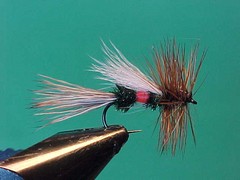
{{+1}}Trude{{-1}}
{{start}}
In the early 1900s, in Island Park, Idaho, Carter Harrison created the "Trude" fly as a joke for his friend and fishing host A. S. Trude. The fly certainly has evolved with a hackle tail and many other changes coming and going over time. My variant is to fill a particular niche in my fly box for a 'Royal Wulff' type fly but with a highly visible white wing not hidden by the hackle.{{end}}
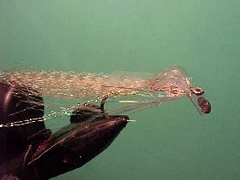
{{+1}}Wiggle smelt{{-1}}
{{start}}
At slow speeds of retrieve it does just what it is designed to do. It's light enough to cast on a fly rod and it swims with a true wiggling action. The down side of course is that if you strip too fast it does not have the weight to stay on track. As long as you keep that limitation in mind it certainly has its application.{{end}}
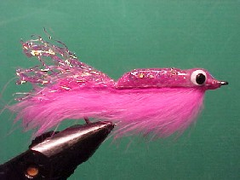
{{+1}}Zonker rattler{{-1}}
{{start}}
This fly has a number of particularly useful applications. For Bass and EP's and in discolored water it works well with a zonker strip back. In Estuaries it works well with a back of Super hair. As a prospecting fly it can be fished at a variety of depths. Perhaps the best method is to count the fly down and then jig it through the area you believe is holding fish.{{end}}
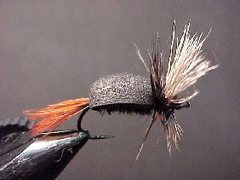
{{+1}}Bandit{{-1}}
{{start}}
If bass are not actively feeding they will generally sit deep and either in or close to structure and out of reach of dry flies and you'll find it easier to target them with a seductive wet fly fished deep and slow. When their active its a whole different story and they will be attracted to almost any surface disturbance.{{end}}
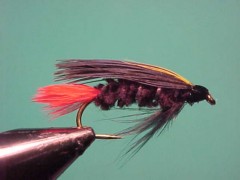
{{+1}}Craig’s nightime{{-1}}
{{start}}
This fly has been adopted by many Australian fly fishers as their favorite night time fly when the mudeye are hatching. Whilst the original version uses Pukeko feathers most in Australia use swamp hen breast feathers . . .obviously road kill as the bird is protected.{{end}}
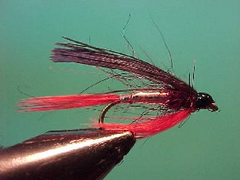
{{+1}}Bloody butcher – Chatto’s variant{{-1}}
{{start}}
Most English wet flies of this type were originally tied as imitations of specific impoundment bait fish or to simply gain the interest of fish and illicit a strike. I have tweaked the original recipe by adding a thorax of claret seals fur. That breaks the harsh lines of the original tie and adds a little bit of extra movement.{{end}}
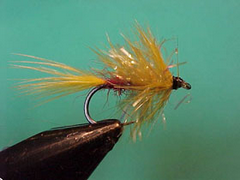
{{+1}}Fat boy – Chatto’s original{{-1}}
{{start}}
This is a "Blob with attitude" and because it actually looks like a fly I find it a a little easier to tie on than its very basic second cousins. It has a place in my fly box because from time to time, and particularly in competition fly fishing, you find yourself fishing in the most unpleasant conditions. In situations like that a blob with attitude may save the day.{{end}}
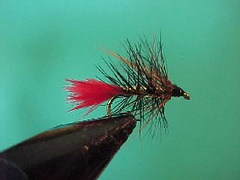
{{+1}}Doobry variants{{-1}}
{{start}}
Although I have never seen a natural of these colours these fly remain useful dropper flies. I lean toward to two red versions when midge are around and the green version works well in waters when midge are around but stick caddis and sand caddis are also on the menu.{{end}}

{{+1}}Dunkeld – hackled as in original{{-1}}
{{start}}
It was the summer of 2000 that I first became involved on English style Loch Style fly fishing and slowly I accumulated an arsenal of techniques and flies. I really enjoy tying flies and so as I have seen various patterns I have tied them and tried them. Most have been discarded and just a few have won a place in my Loch Style fly box - this is one of the keepers. Although I have never seen a natural of these colours this fly is one of my top dropper favorite flies.{{end}}

{{+1}}Smelt – Chatto’s version{{-1}}
{{start}}
It tied this fly when last in New Zealand as a merger of a couple of flies to represent their small native fish called a Cockabully. I used it quite successfully fishing the seams in in fast rivers on a fast sink line and decided it add it to my fly box for future use. I am confident that with less weight it will also be a great lake fly and I expect that it can also be used as an imitation to other small bait fish either in the colour below or other hues.{{end}}













